↘
AT THE TABLE?
Wine, insects and peasant protests.
Food shapes not only our biological bodies, but also regional and national
identities. As a cultural technique, food plays an essential role in shaping
social relations; fields, feedlots and plantations characterise landscapes.
The way we produce and consume food plays a key role in shaping our
everyday world.
At the same time, there are increasing challenges to our food system: loss of biodiversity, climate change, water scarcity, inequitable global distribution of resources and hunger. These issues are fuelling a global and controversial discourse about the needs, habits and values embedded in our food systems. The fact is that our diet is undergoing technological and social change: insect proteins, meat from 3D printers, veganism, virtual beers with friends – the way we grow, produce, distribute, perceive and eat is changing radically in some areas.
In At the table? we took a practical look at the current situation surrounding our food. We traced the paths of our food from cultivation to consumption and looked for opportunities to intervene in existing processes. We unterstood eating as a cultural technique, as a holistic experience, as a collective ritual. How can design help to change our food system? What might alternative ways of growing, producing, distributing and consuming food look like? What cultural and sensory aspects of food could be designed with global justice and regional identity in mind? What about the social aspects of food sourcing and preparation? What potential does ›the digital‹ hold for rhythms and rituals around food and eating?
At the same time, there are increasing challenges to our food system: loss of biodiversity, climate change, water scarcity, inequitable global distribution of resources and hunger. These issues are fuelling a global and controversial discourse about the needs, habits and values embedded in our food systems. The fact is that our diet is undergoing technological and social change: insect proteins, meat from 3D printers, veganism, virtual beers with friends – the way we grow, produce, distribute, perceive and eat is changing radically in some areas.
In At the table? we took a practical look at the current situation surrounding our food. We traced the paths of our food from cultivation to consumption and looked for opportunities to intervene in existing processes. We unterstood eating as a cultural technique, as a holistic experience, as a collective ritual. How can design help to change our food system? What might alternative ways of growing, producing, distributing and consuming food look like? What cultural and sensory aspects of food could be designed with global justice and regional identity in mind? What about the social aspects of food sourcing and preparation? What potential does ›the digital‹ hold for rhythms and rituals around food and eating?
The course included an excursion to the
Schenk Winery ↗ in Randesacker. We would like to thank Thomas Schenk for his open and heart warming insight into their production.
We would also like to thank cacao entrepreneur and activist Lydia Amenyaglo ↗ for her amazing insight into the work of the Ghana Food Movement ↗. The full talk is available here ↗.
Supervision Prof. Judith Glaser
Summer Term 2024
We would also like to thank cacao entrepreneur and activist Lydia Amenyaglo ↗ for her amazing insight into the work of the Ghana Food Movement ↗. The full talk is available here ↗.
Supervision Prof. Judith Glaser
Summer Term 2024
↘

LABSHI
Tabea Krause
We all love fish but...what do we do if fish stocks continue to decline? What alternatives would become an option in future?
The current situation of the fish population in our ocean has led me to this product. Labshi is the representation of fish that is artificially produced in the laboratory. A food of the future. The product is intended to make people aware of the current, worrying situation of overfishing and declining in fish stocks. It is to be understood as a possible consumption of our excessive consumption of wild fish. Labshi could soon become a reality.
The current situation of the fish population in our ocean has led me to this product. Labshi is the representation of fish that is artificially produced in the laboratory. A food of the future. The product is intended to make people aware of the current, worrying situation of overfishing and declining in fish stocks. It is to be understood as a possible consumption of our excessive consumption of wild fish. Labshi could soon become a reality.
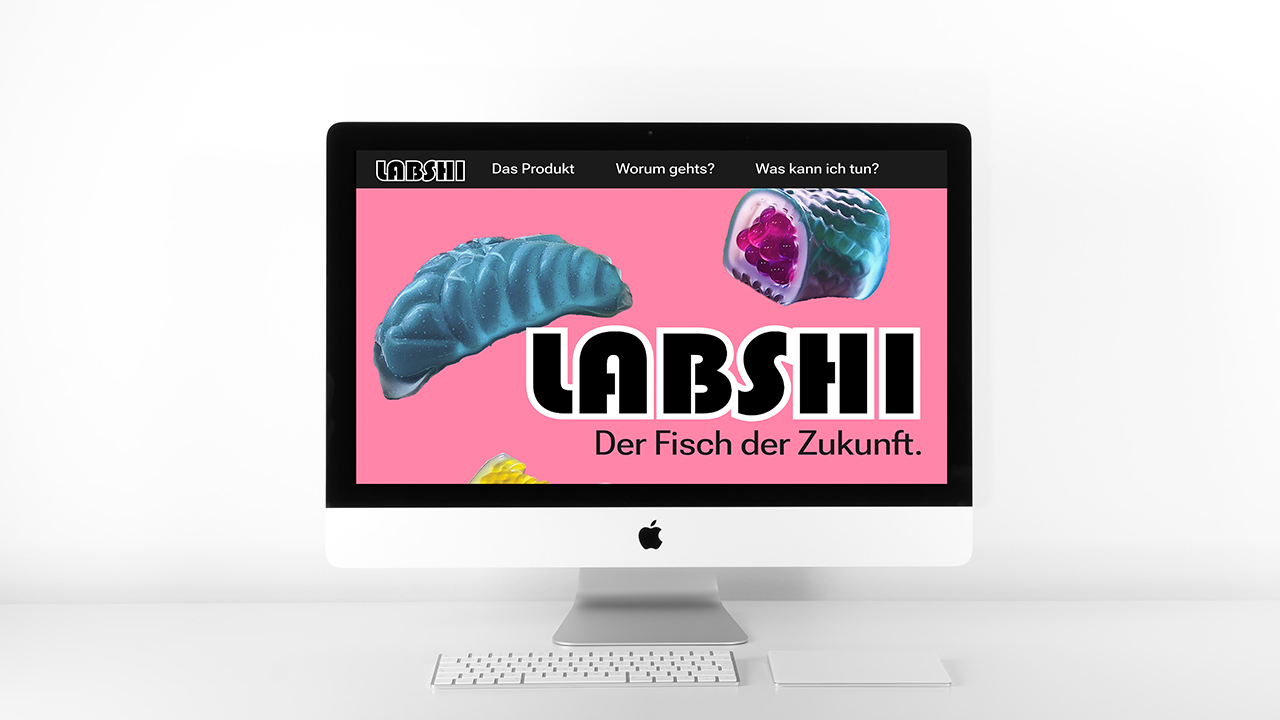
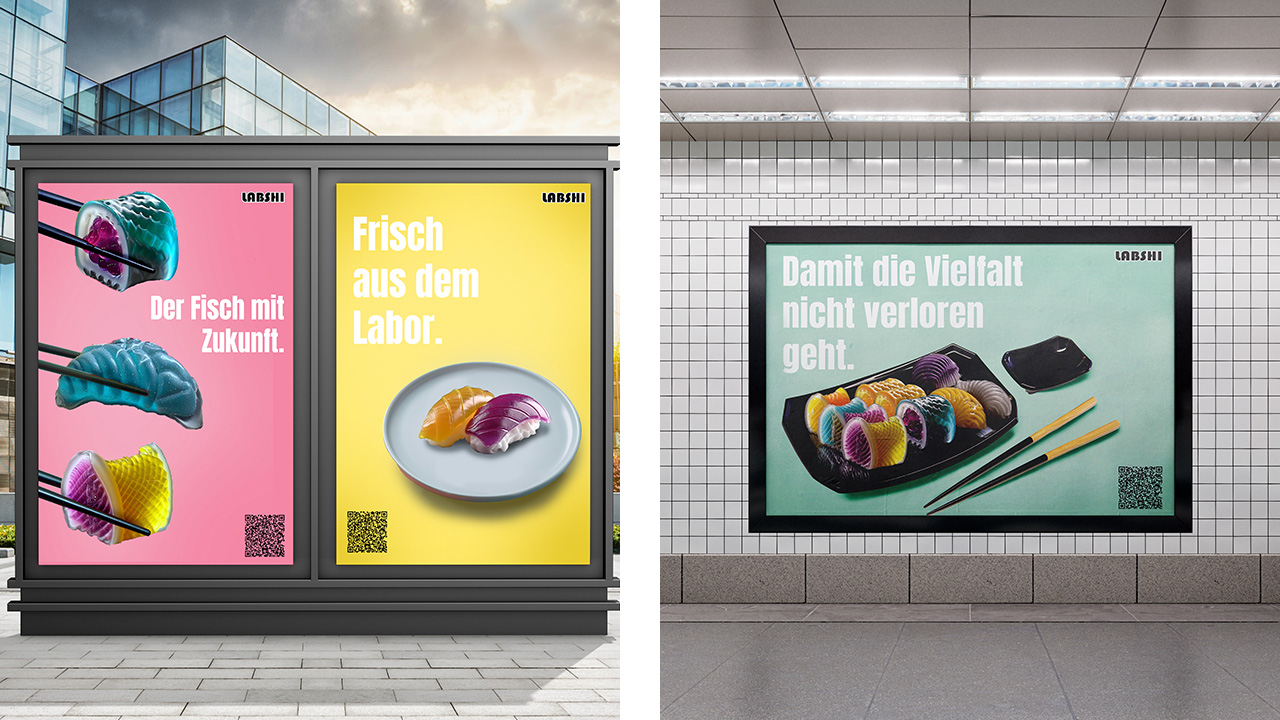
↘
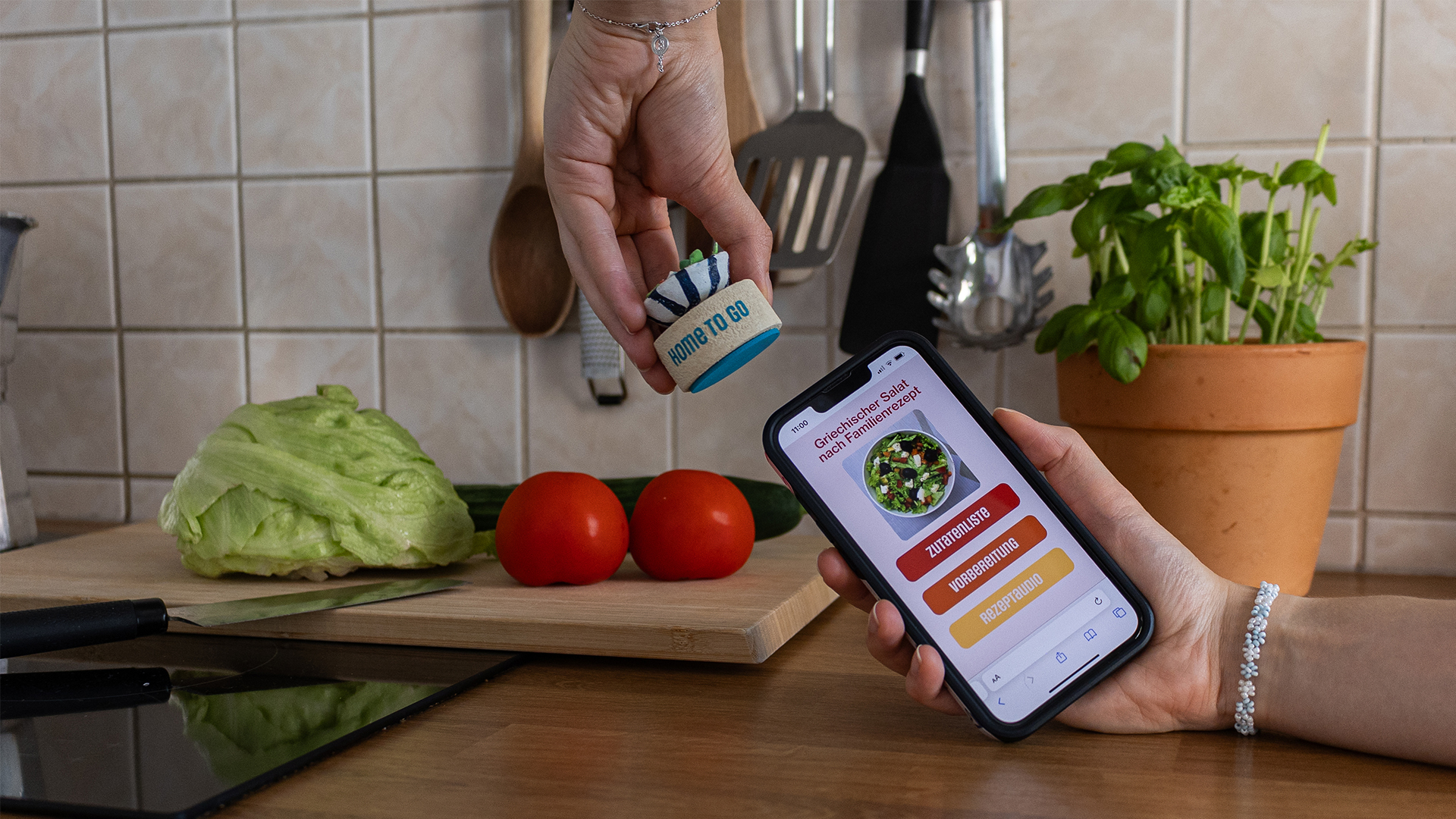
home to go
Minola Hergett
home to go is a service, that makes it possible to preserve the
flavour of home while cooking by combining beloved recipes with the voices and
stories of home. With the help of interactive recipe elements, which store the
recipes in a spoken version on an NFC chip, you can cook the dishes accompanied
and enjoy the familiar voices and memories.
Via the website, home to go guides you step by step through the process of creating your own recipe element. Detailed instructions with tips are provided for the recording part in the form of a recording guide. Afterwards the development of the recipe element begins: The audio file sent in is edited to provide the best possible accompaniment for cooking. The finished audio file and the list of ingredients are installed on an NFC chip in the element, so that the data can be called up later by simply holding it up to a smartphone.
Via the website, home to go guides you step by step through the process of creating your own recipe element. Detailed instructions with tips are provided for the recording part in the form of a recording guide. Afterwards the development of the recipe element begins: The audio file sent in is edited to provide the best possible accompaniment for cooking. The finished audio file and the list of ingredients are installed on an NFC chip in the element, so that the data can be called up later by simply holding it up to a smartphone.
As a final step, a miniature model is generated
from the photos of the dish, which sits on the element. This allows the modules
to be kept apart and also has a decorative function. home to go wraps the finalized element when it is ready and sends
it to the desired address.


↘

Ferment Eck
Lea Geldmacher, Henriette Hack
Fermentation brings people together and creates communities. In our Ferment Eck project, we explore how fermenting food not only creates healthy products, but also builds a strong sense of community. Sharing knowledge, recipes, fermentation spin-offs and experiences creates a network of people who support and inspire each other. Our Ferment Eck promotes traditional and sustainable methods and shows how working and learning together creates connections that go far beyond fermentation.
Our Ferment Eck is a meeting place for the community to exchange ideas. It is a place to share, there are recipes to take away in the form of flyers, a magazine, as well as our fermentations and a tasting speed dating video to watch.
Our Ferment Eck is a meeting place for the community to exchange ideas. It is a place to share, there are recipes to take away in the form of flyers, a magazine, as well as our fermentations and a tasting speed dating video to watch.
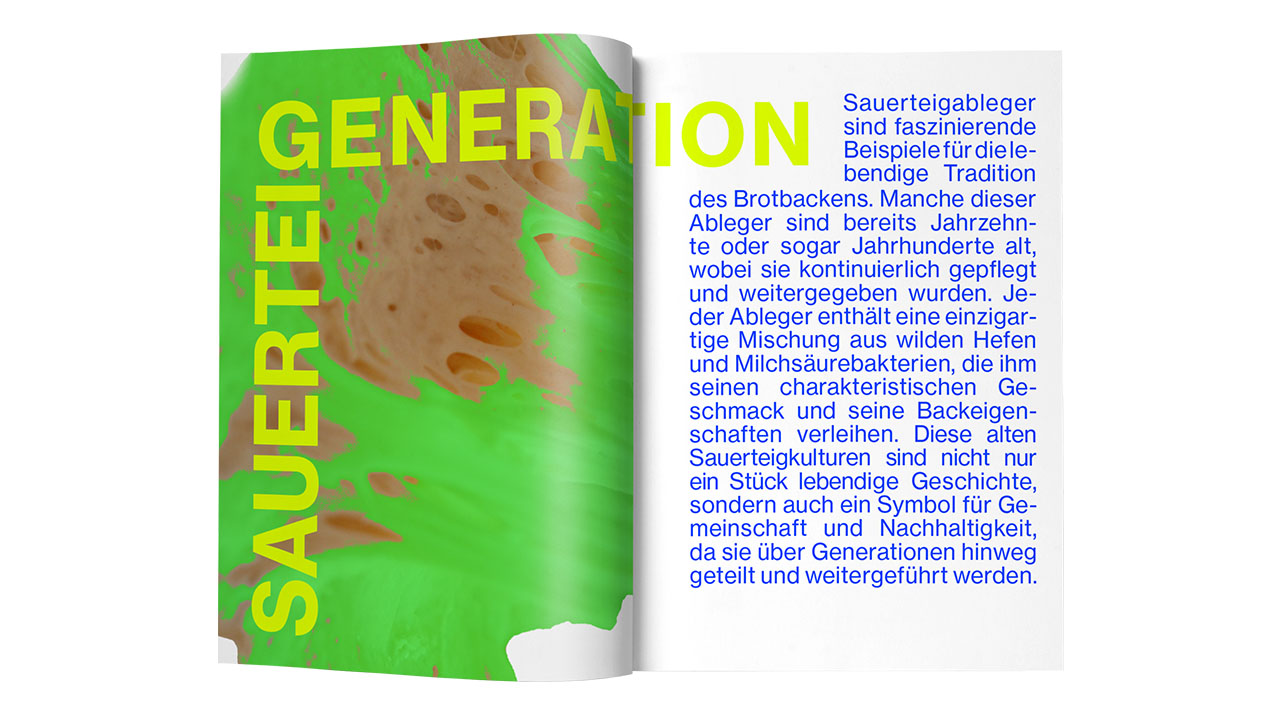
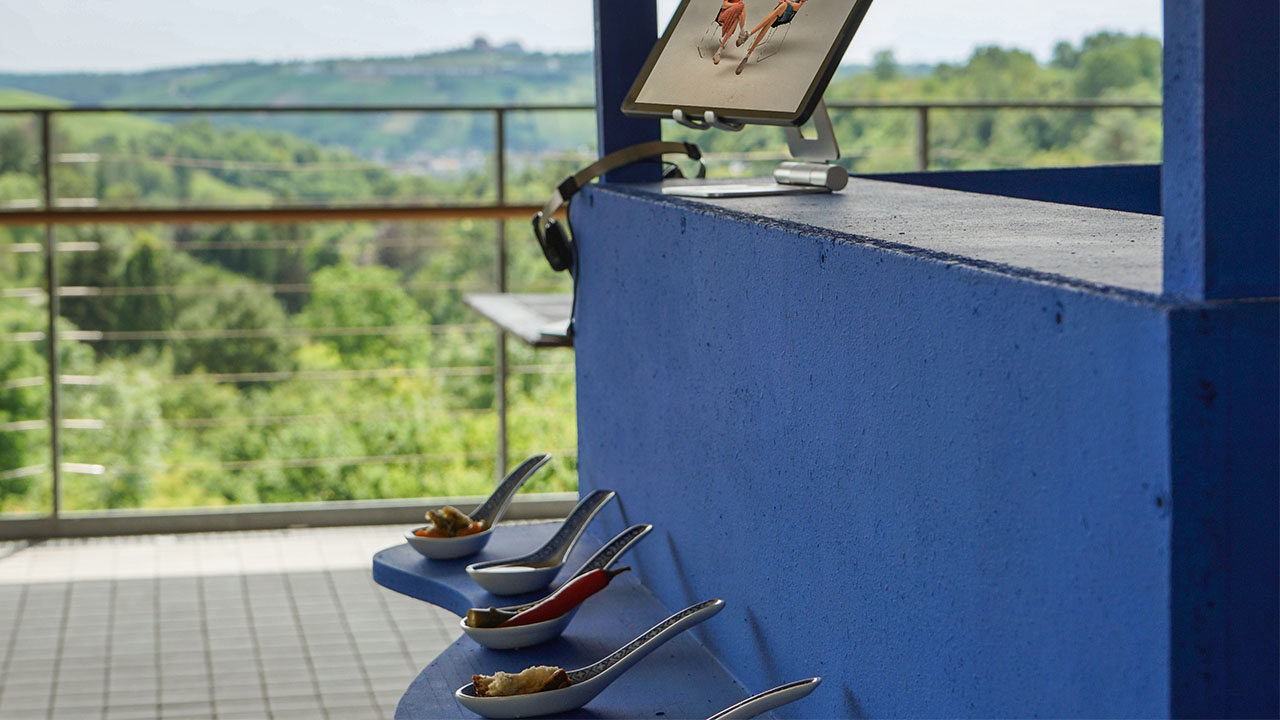
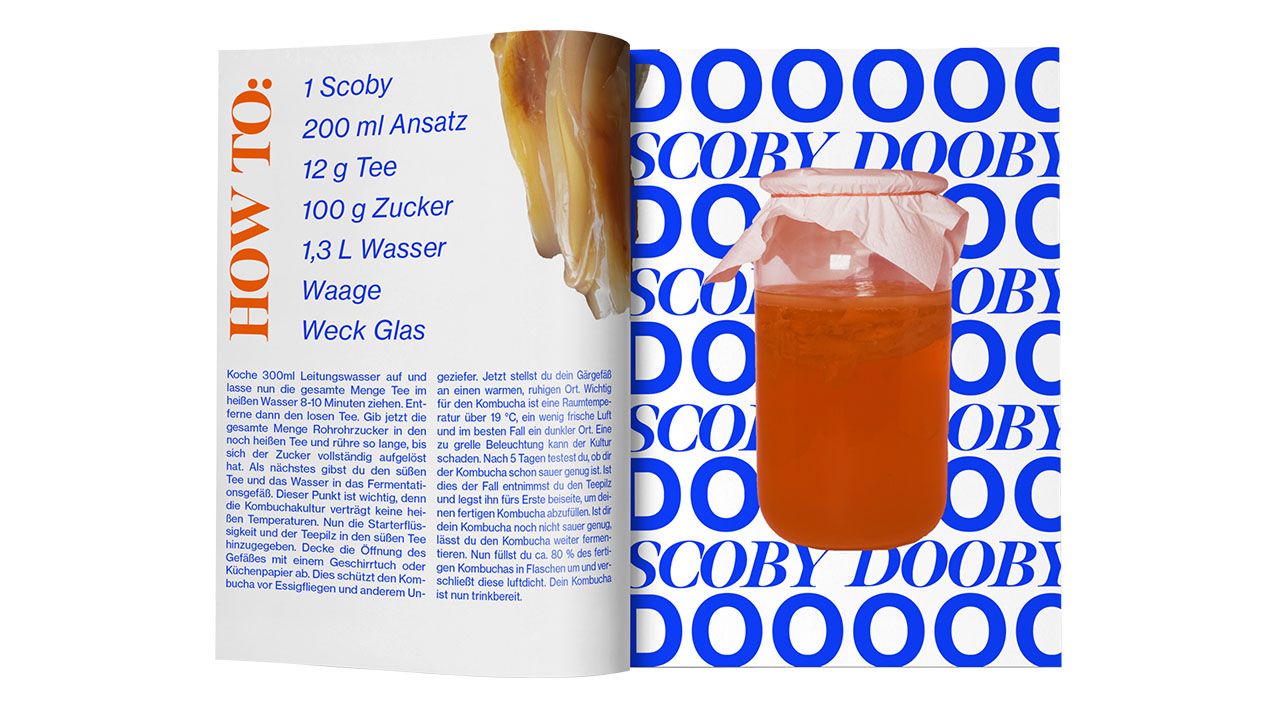
↘

FalTable
Paul Schulz
Picnics are a social event. They bring people together and into nature, and encourage conscious eating. FalTable creates a surface that can be used as a dining table or a base for board games, making the picnic experience easier and more enjoyable. When folded flat, the picnic table is very compact, lightweight and easy to carry and store. When unfolded, it offers maximum stability and a large table surface. The social aspect of the picnic is reflected in the table's modularity. By combining several FalTables, you can create individual shapes, a long table or a round table.
The materials used offer the properties needed to enable the folding mechanism. A fabric tape connects the different multi-wall sheets and ensures flexibility and strength while covering sharp edges. The magnetic handle makes the design portable and easy to handle, while also holding the surface plate in place.

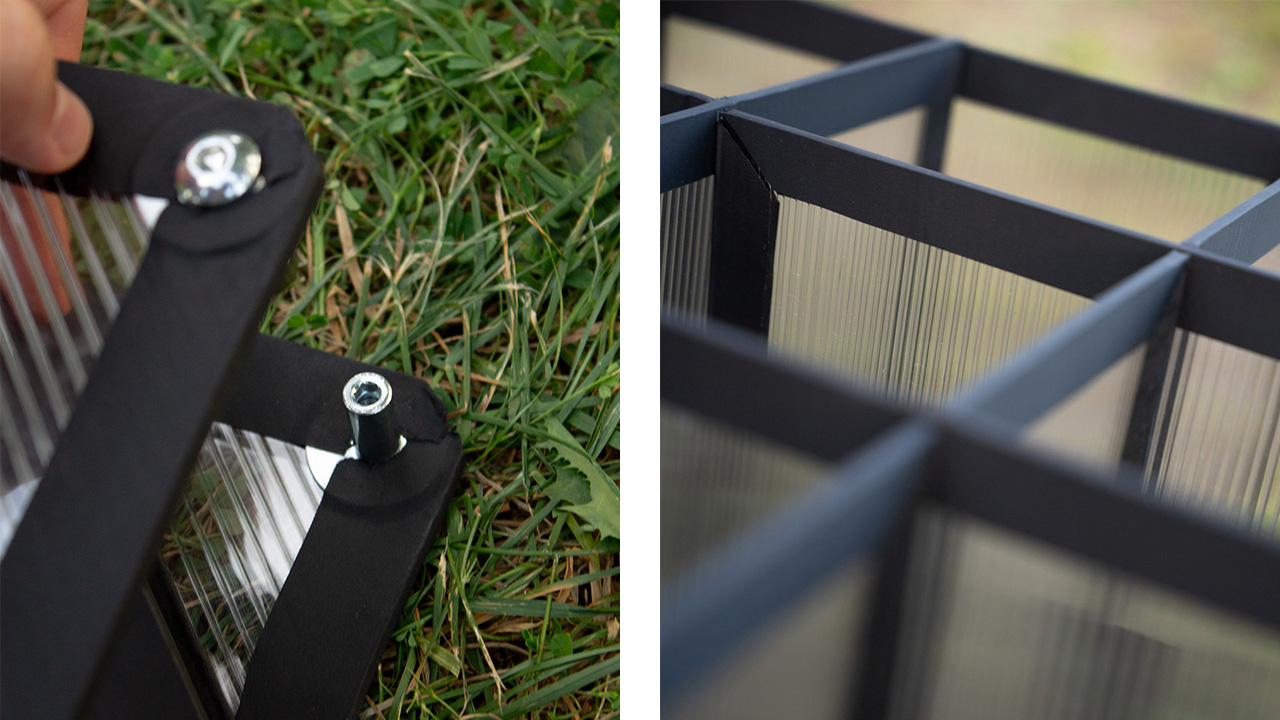
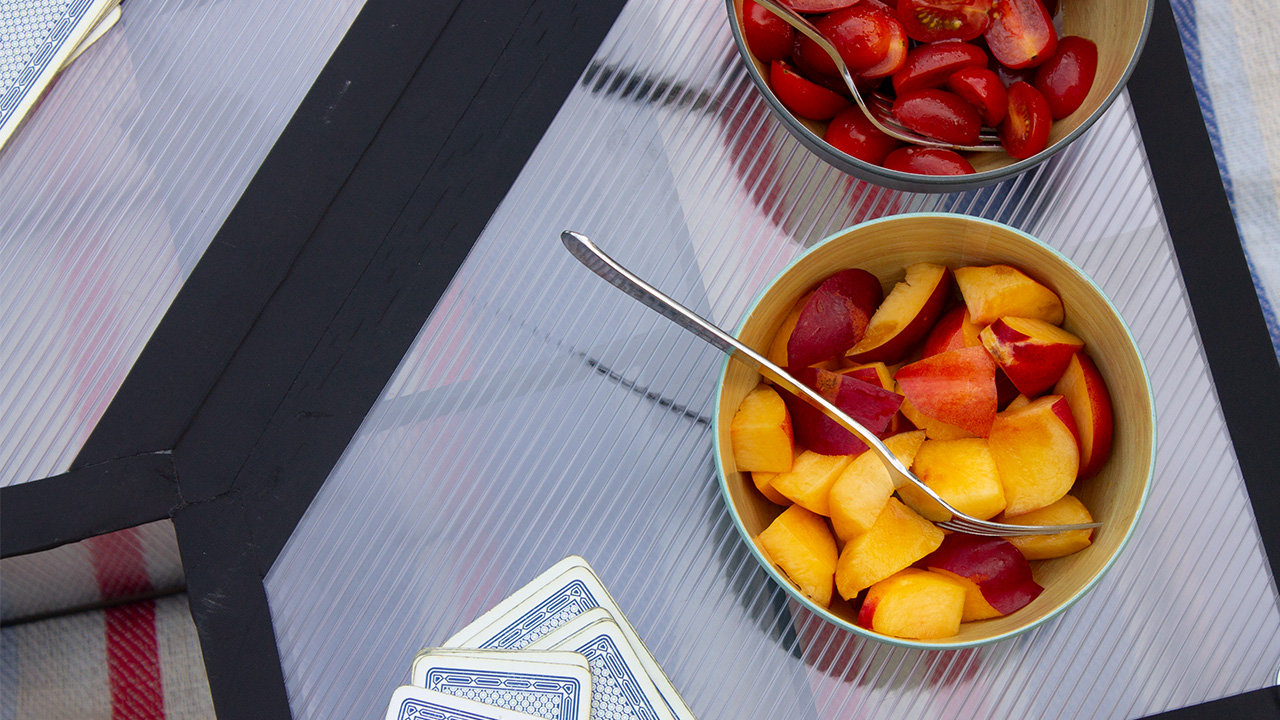
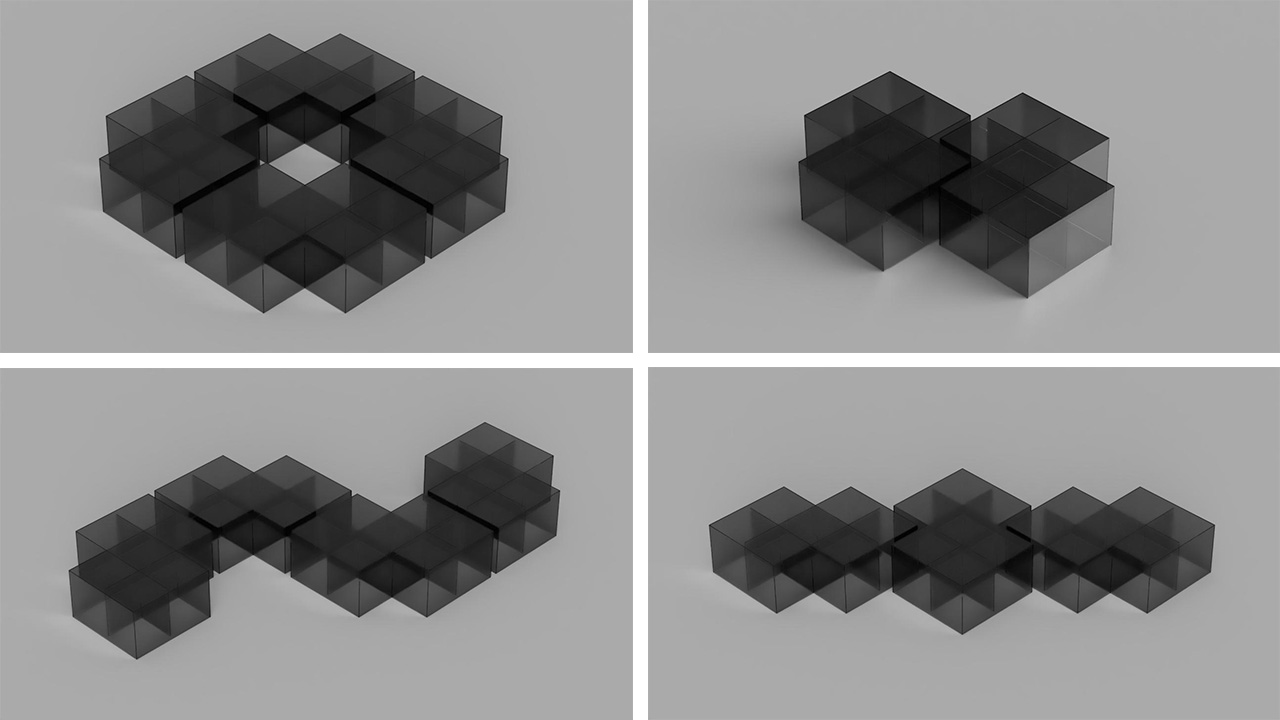
↘
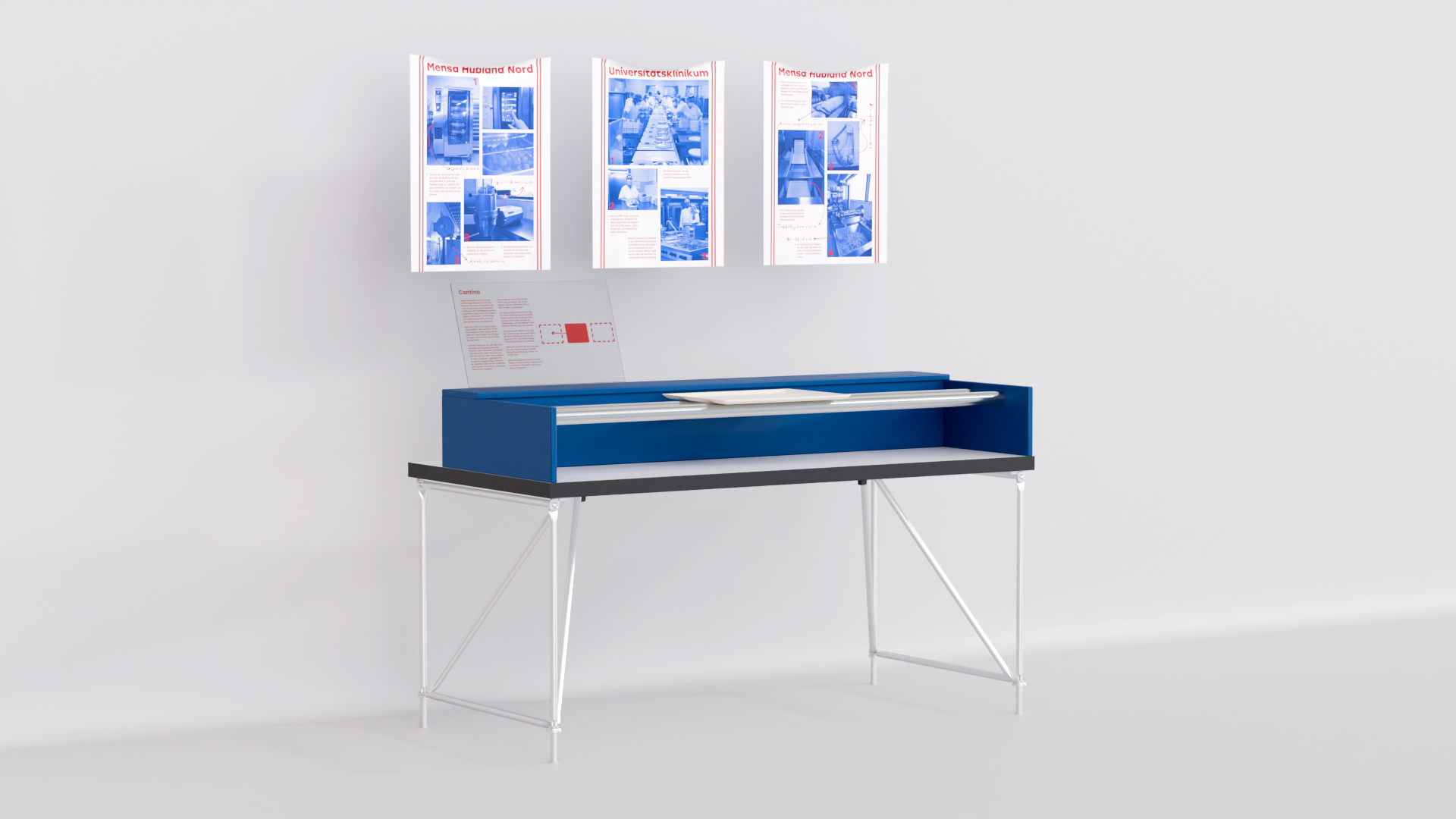
Cantina
Katja Almeida-Dehesa, Lorenz
Schneider
We, Katja
and Lorenz, eat regularly in the canteen, pick up our food from the serving
counter and then put our tray on the return conveyor, where it travels off into
the unknown without us.
So, we wondered what happens at the end of the conveyor belt tunnel. Who cuts, slices and tastes our food every day? And above all: how do these people manage to cook starters, a salad bar, five hot meals and desserts for hundreds of hungry stomachs every day without anyone going away empty-handed? To find out, we visited the Mensateria Hubland Nord and the kitchen at Würzburg University Hospital. We also had the opportunity to interview the kitchen manager of the Würzburg Institute for the Blind, whose kitchen is currently being renovated.
So, we wondered what happens at the end of the conveyor belt tunnel. Who cuts, slices and tastes our food every day? And above all: how do these people manage to cook starters, a salad bar, five hot meals and desserts for hundreds of hungry stomachs every day without anyone going away empty-handed? To find out, we visited the Mensateria Hubland Nord and the kitchen at Würzburg University Hospital. We also had the opportunity to interview the kitchen manager of the Würzburg Institute for the Blind, whose kitchen is currently being renovated.
The
resulting installation invites you to discover the world of the canteen
kitchens through an interactive and visually exciting experience. Inspired by
the everyday tray rack, pushing a tray leads to the playback of three different
videos showing our experiences in the canteen kitchens. Hanging above the tray
rack are kitchen towels with photos from the canteen kitchen - both of the
appliances and the people who work there. We used the cyanotype process for the
photo printing so that the images embed themselves in the fabric like stains.
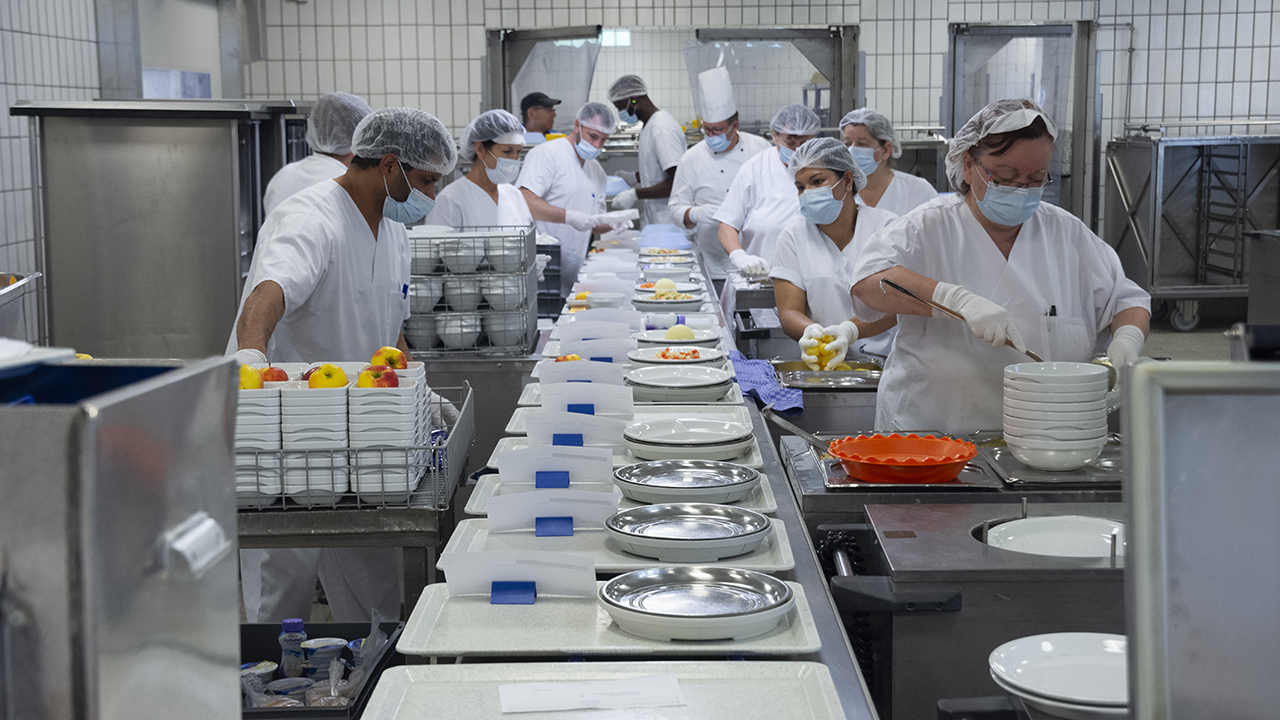

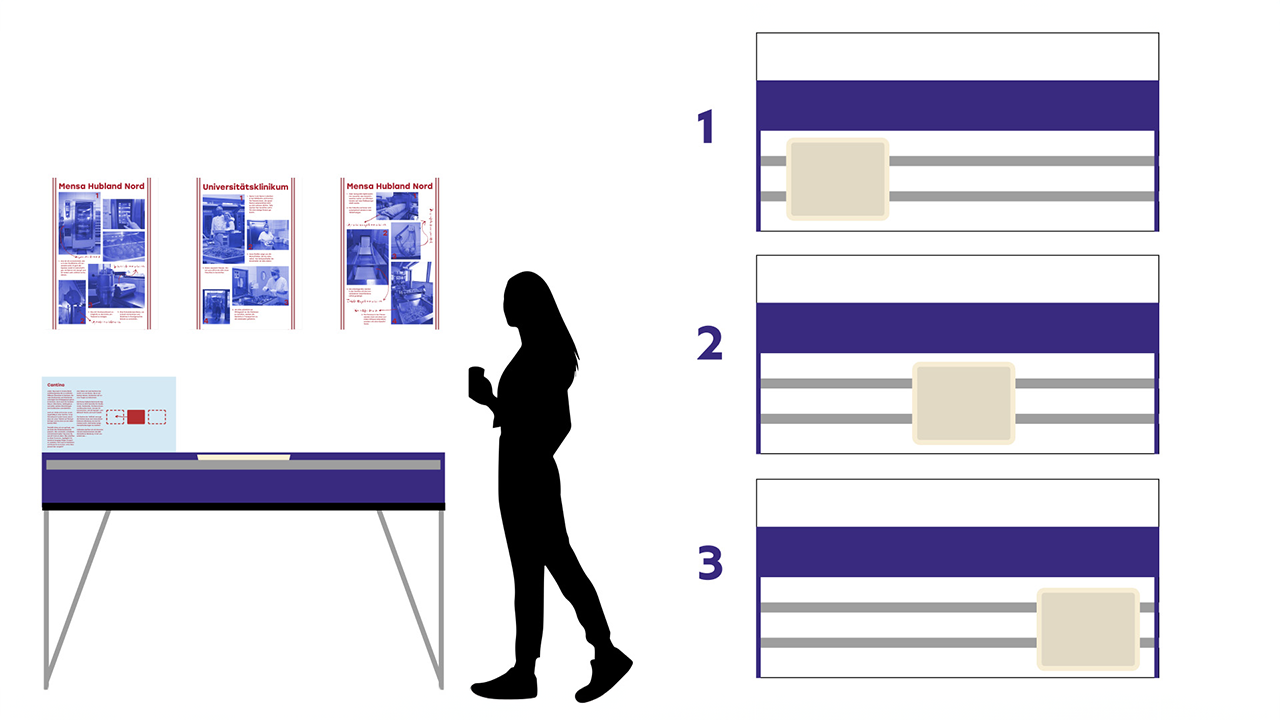

↘
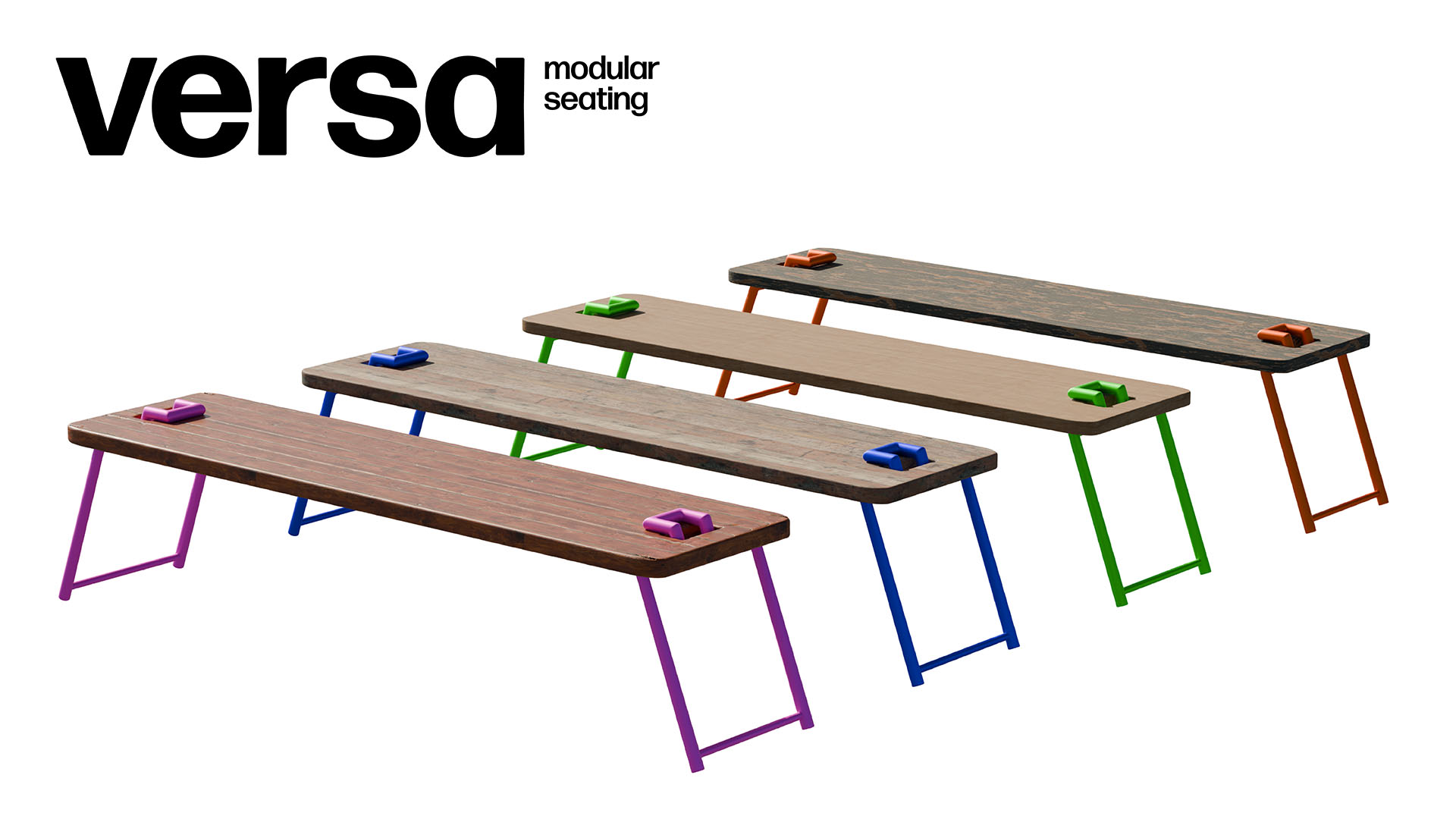
Versa
Julia Baisch
Lots of people, few seating options? Every larger shared flat is familiar with this problem when
friends come to visit and it's not uncommon to suddenly find yourself sitting on crates of beer
because there are no more chairs. Versa is a modular and DIY-friendly bench system, designed
for quick assembly and easy, space-saving storage in small apartments. The focus is on the metal legs, the seat plate can be made yourself as a DIY to save money and give free rein to your own creativity. Organic shapes, crazy colors or the old top from the shelf? You can use almost
anything. Nonetheless, tops can also be purchased in different shapes and materials. The feet are available in a total of four colors. Versa stands for versatility. Decide for yourself between high-quality furniture or a combined and personalized DIY project.
for quick assembly and easy, space-saving storage in small apartments. The focus is on the metal legs, the seat plate can be made yourself as a DIY to save money and give free rein to your own creativity. Organic shapes, crazy colors or the old top from the shelf? You can use almost
anything. Nonetheless, tops can also be purchased in different shapes and materials. The feet are available in a total of four colors. Versa stands for versatility. Decide for yourself between high-quality furniture or a combined and personalized DIY project.
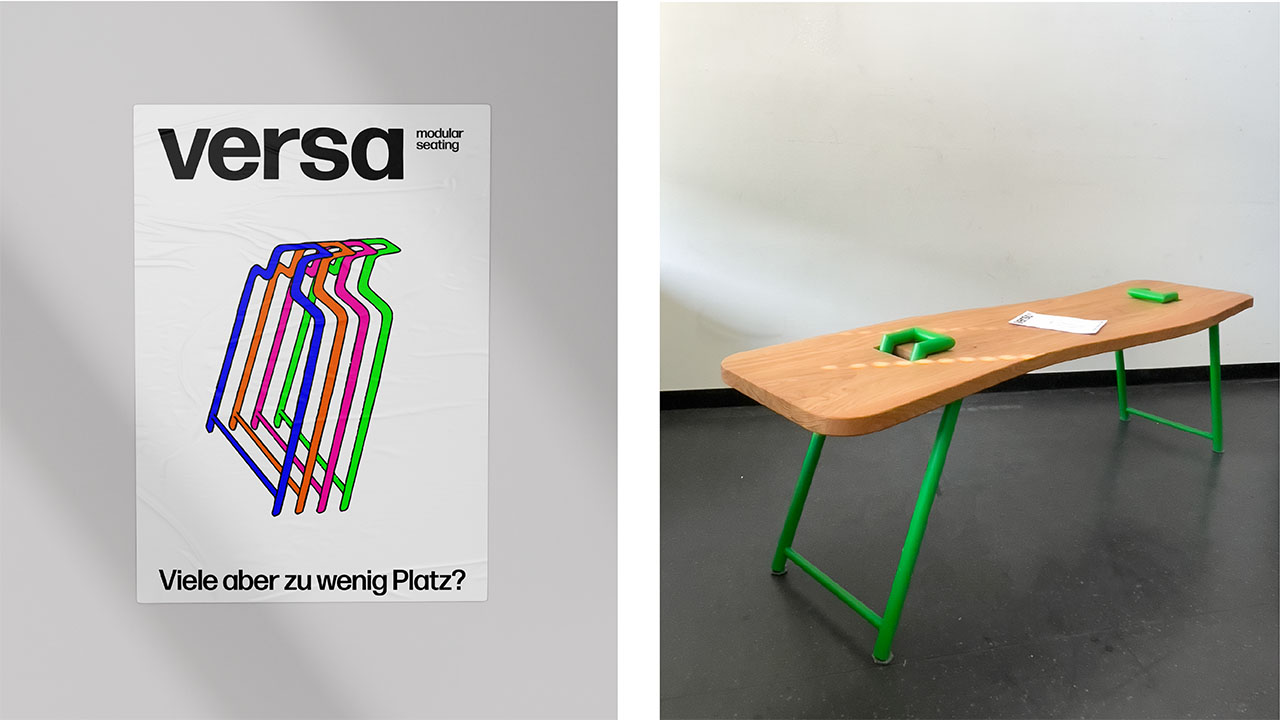

↘
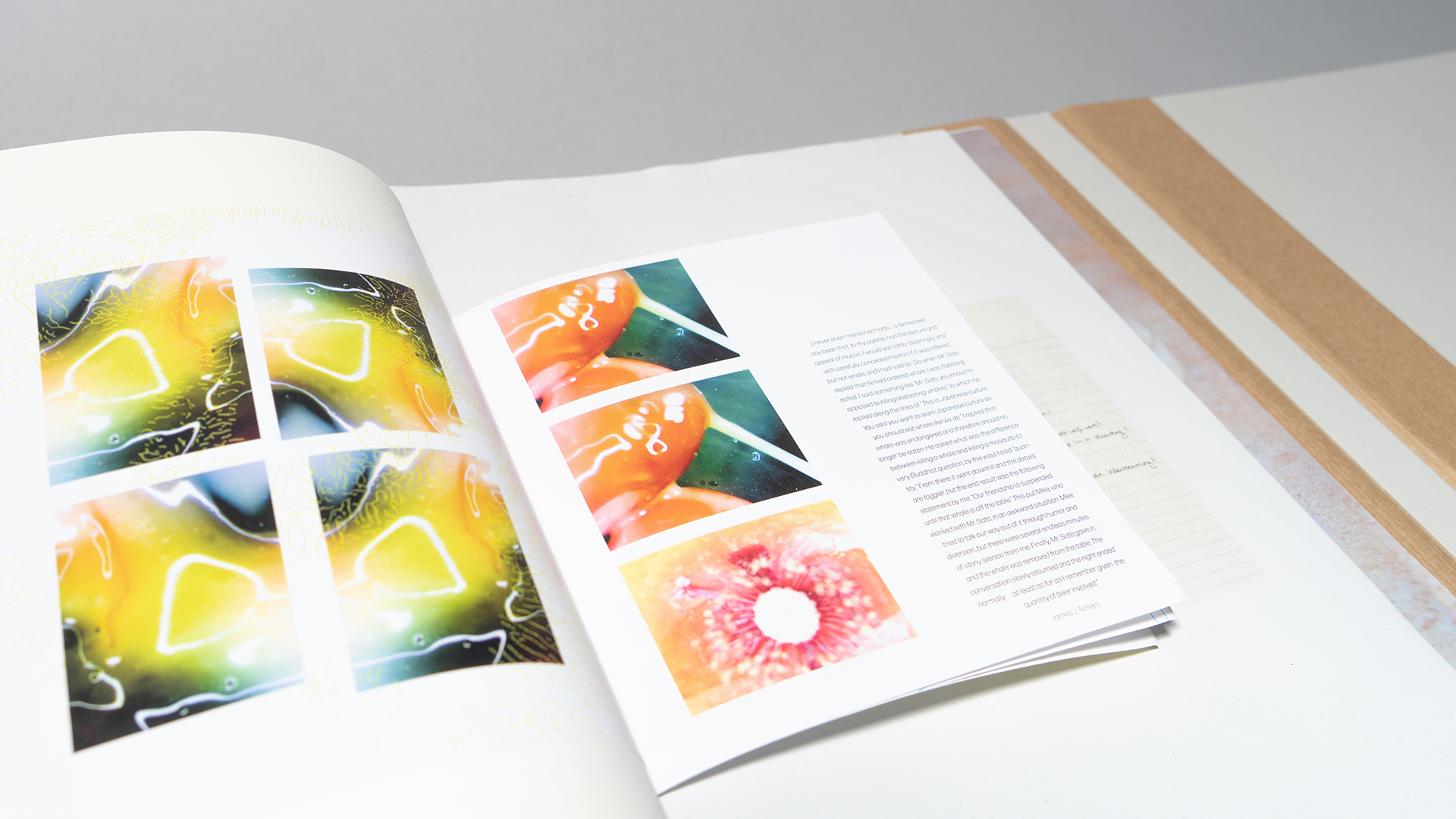
VISCOS
Amelie Deimel
»If nature is understood as a fiction - whether as a desire for continuity and coherence, or as the idea that something completely different exists - then the question of how nature shapes design, i.e. the shaping of the human environment, also arises anew. If nature is not something given from the outset, but a product, even a projection of humanity, something that industrialisation has brought about in the first place, then it can also be understood as design. The fact that nature can be represented, that it can be depicted as an image, text or sign system, also contains the possibility that it can be changed and manipulated. Seen in this way, design and nature are interdependent. If we are unable to treat nature as we find it without causing lasting damage, why should we be any better at manipulating it? It seems to make more sense to be inspired by the 'model of nature' with its formal, structural and constructive laws and to respect them in order to find innovative answers.« (Museum für Gestaltung Zürich: Nature Design)
The work deals with the formal aesthetics of slime from a metaphorical point of view. The starting point of my approach was the keeping of a laboratory diary, supplemented by ideas, associations and perceptions. Microscopies, photographs and sketches support the work, which is brought together graphically in a magazine collection.

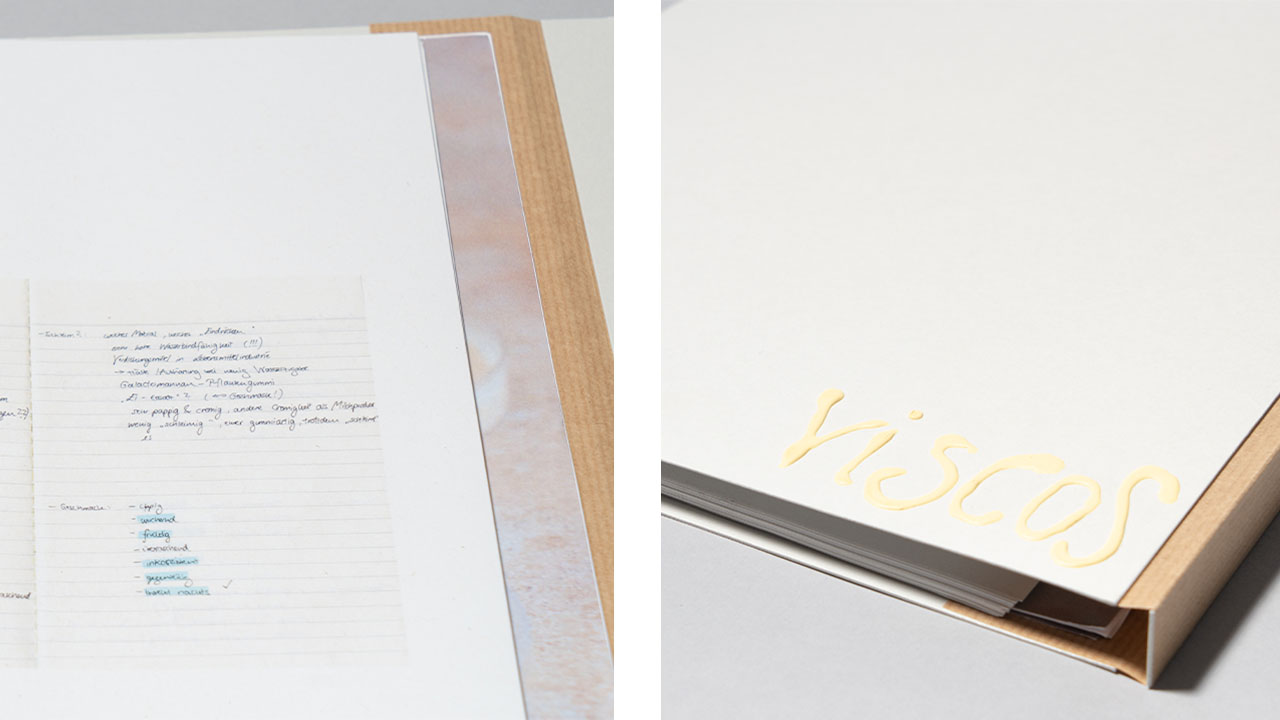
↘
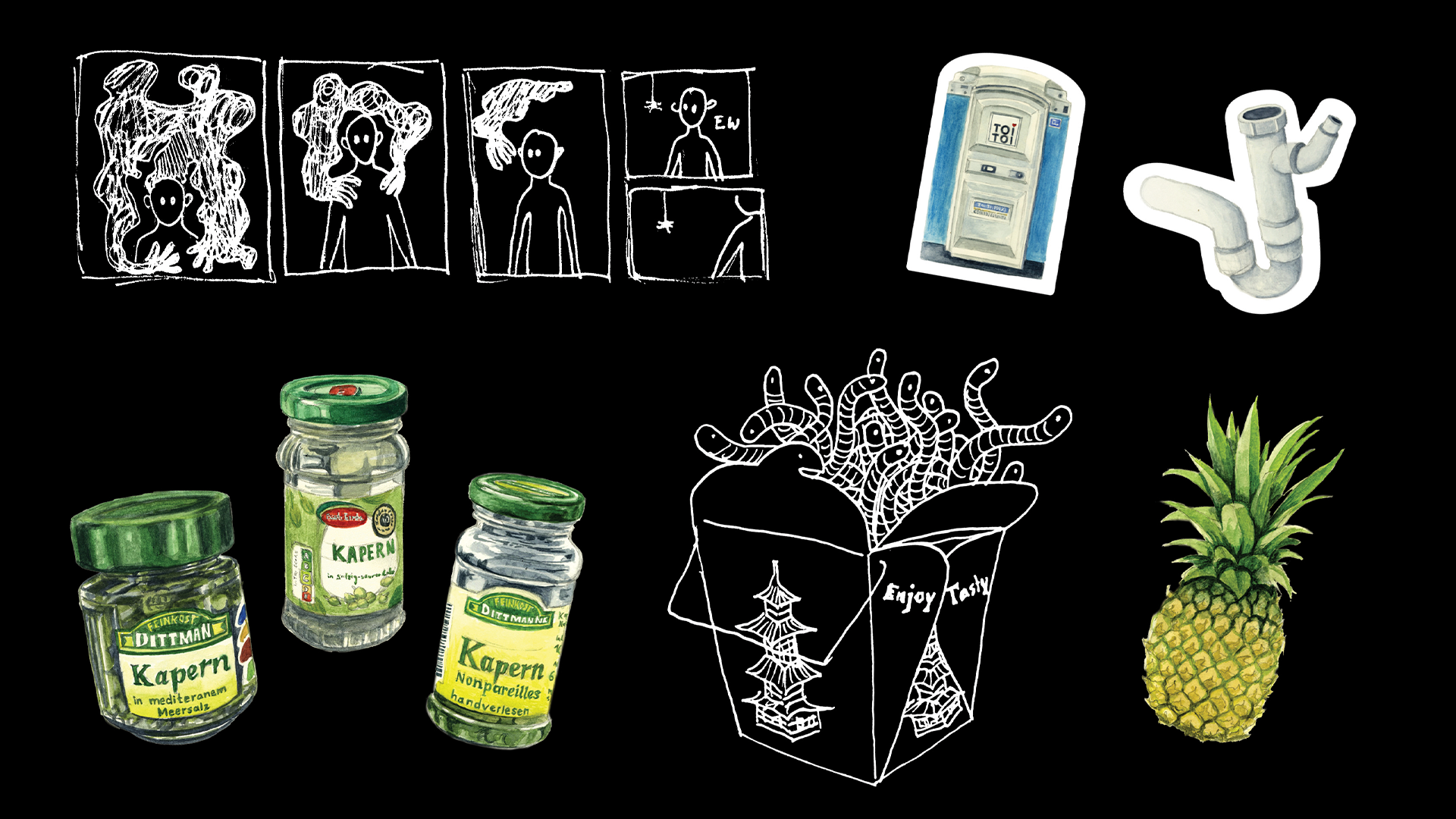
Igitt
Nicole Healy
»The elementary pattern of disgust is a closeness which isn't wanted.«
Winfred Menninghaus
Disgust is a basic human emotion. I was interested in the individual, subjective, but also highly culturally determined character of disgust. I started to observe and document the everyday encounters I had with this emotion. An interesting statement I came across was the idea that you have to try a food eight to sixteen times until you like it. Because of that I started a self-experiment, which I documented in photographs, texts and illustrations. Parallel to that I continued my research to look at the impact and the background of disgust. The change from a useful healthy protection to a dangerous distinction in the form of racism
or xenophobia was very interesting to me. My project is a personal journey about my impressions, experiences and learnt facts about
disgust.
Winfred Menninghaus
Disgust is a basic human emotion. I was interested in the individual, subjective, but also highly culturally determined character of disgust. I started to observe and document the everyday encounters I had with this emotion. An interesting statement I came across was the idea that you have to try a food eight to sixteen times until you like it. Because of that I started a self-experiment, which I documented in photographs, texts and illustrations. Parallel to that I continued my research to look at the impact and the background of disgust. The change from a useful healthy protection to a dangerous distinction in the form of racism
or xenophobia was very interesting to me. My project is a personal journey about my impressions, experiences and learnt facts about
disgust.
I chose to work completely analogue and my book is divided in three different parts. The first
part is a theoretical examination in the form of texts and associative drawings where I looked at different topics like: Is disgust a conservative emotion? The change of disgust throughout
our lives, disgust and morals, disgust and racism, the difference between disgust and anxiety, context, connotation, existential disgust and more.
The second part is a reflection of my personal everyday encounters with disgust. The third part is a self-experiment, in which I tried for about three weeks to get used to the taste of
capers.




↘

Brutzel Betty
Daniel Heilmann
Barbecuing in the summer is freedom. A freedom that is often denied to people living in cities. A lack of green spaces and their own barbecue or occupied public barbecue areas are the cause. The Brutzel Betty rental barbecue system provides a remedy and revolutionises the barbecue experience in cities.
The rental grill box comes complete with barbecue tongs, cutlery and plates for four people, making it possible to start barbecuing on the spur of the moment without a lot of hassle or rubbish.
The rental grill box comes complete with barbecue tongs, cutlery and plates for four people, making it possible to start barbecuing on the spur of the moment without a lot of hassle or rubbish.
Brutzel Betty is complemented by rental stations and a corresponding app. The stations will be permanently installed at various frequented locations in public spaces such as parks. Brutzelt Bettys can be picked up and returned at these stations. It will also be possible to buy coal and dispose of waste and hot ash from the barbecue at the stations.
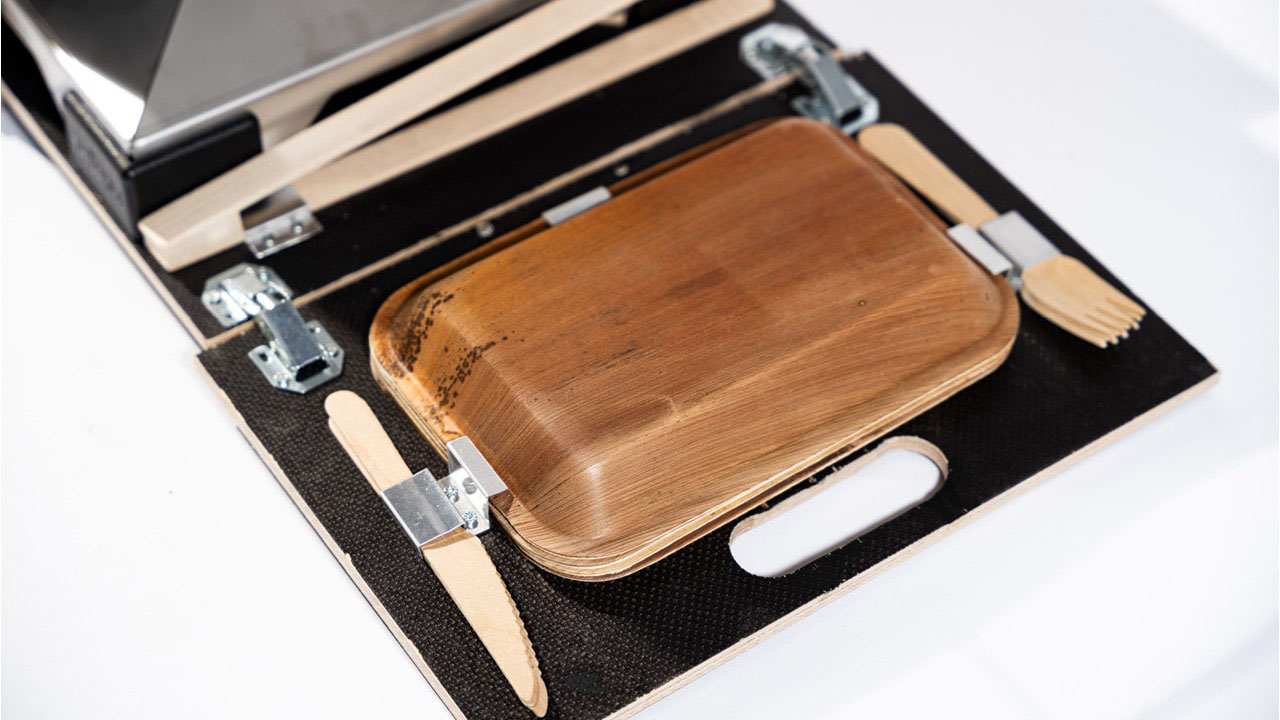



↘
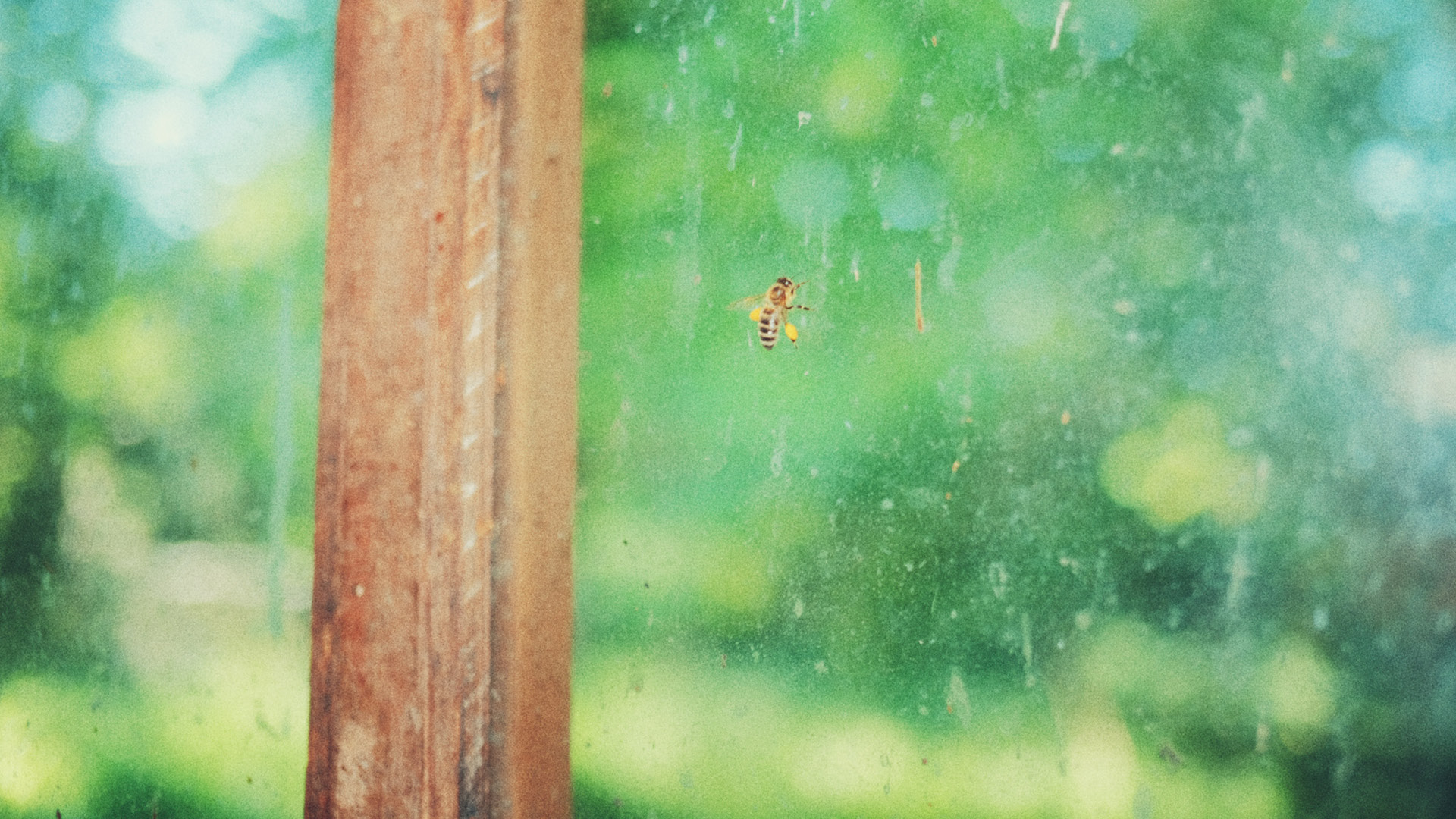
Ora et Labora
Lea Kruse
The
photo project Ora et Labora documents the sustainable and self-sufficient
practices of a monastery that lives by the motto ›Pray and work‹. This project
highlights how the monks maintain a self-sufficient lifestyle through a
combination of prayer and hard work.
Photographs show the monks working in the fields, where they practice organic farming to grow their food. The images illustrate the cultivation of vegetables, fruits, and herbs, as well as the raising of livestock such as chickens and goats. A special focus is on traditional crafts, such as beekeeping, bread baking, and cheese making, which not only contribute to self-sufficiency but also preserve ancient techniques.
Photographs show the monks working in the fields, where they practice organic farming to grow their food. The images illustrate the cultivation of vegetables, fruits, and herbs, as well as the raising of livestock such as chickens and goats. A special focus is on traditional crafts, such as beekeeping, bread baking, and cheese making, which not only contribute to self-sufficiency but also preserve ancient techniques.
In
addition to agricultural and craftwork, the project also documents the
spiritual side of monastic life. Pictures of prayer sessions, meditation, and
communal worship convey how spiritual practice and physical labor are in
harmony. The photographs show how the monks, through their lifestyle, leave a
minimal ecological footprint and promote a sustainable way of life.
Ora et Labora captures the harmony between man and nature and illustrates how traditional ways of life and sustainable practices can endure in the modern world. This photo project offers an inspiring glimpse into a community characterized by simplicity, mindfulness, and respect for creation.
Ora et Labora captures the harmony between man and nature and illustrates how traditional ways of life and sustainable practices can endure in the modern world. This photo project offers an inspiring glimpse into a community characterized by simplicity, mindfulness, and respect for creation.


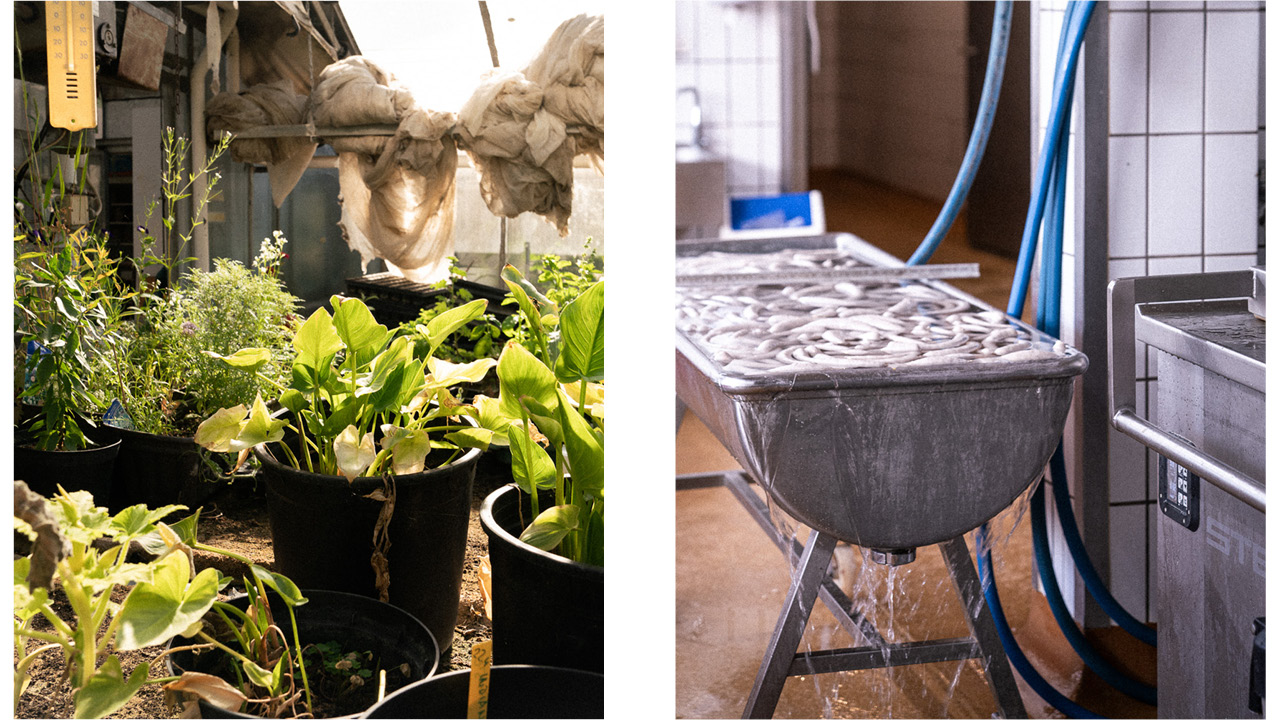

↘
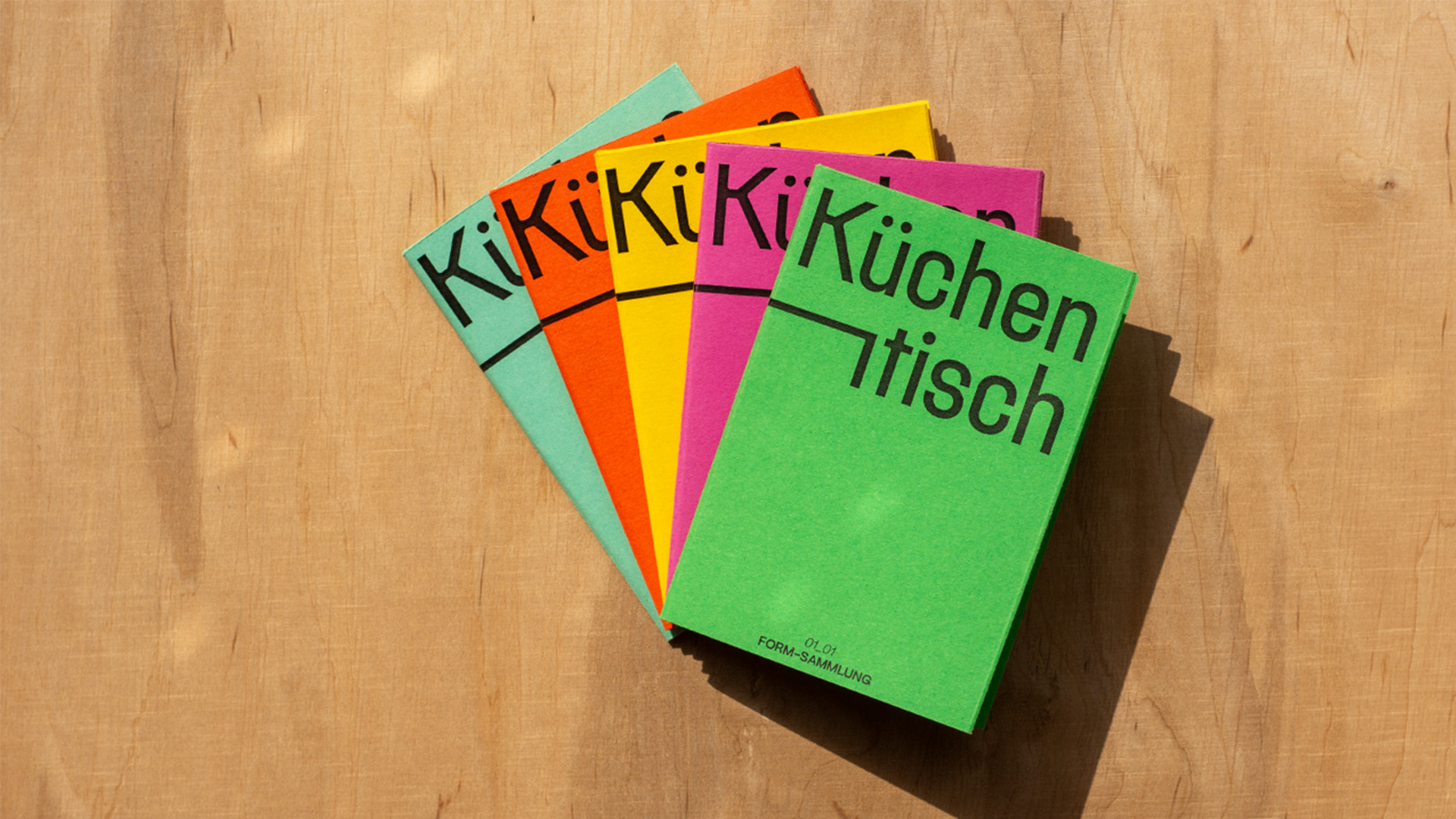
Der Küchentisch
Shannon Kruse
The kitchen table's multi-purpose role as worktop, workbench, chopping board, sewing table and social gathering place has diminished over the last century. With better living conditions and more spacious living areas, the one place where everyone gathered in the evening was divided between the study, workshop, bedroom and living room.
In five categories, The Kitchen Table zine series focuses on the kitchen table as more than just a piece of furniture. In separate series, the zines deal with the form, the objects on it, the table surfaces and traces of use, memories that take place at the kitchen table, and the table as a place of exchange from a feminist perspective. It is intended to be a collection of the kitchen table as a multi-functional object and a place of gathering, raising awareness of the importance of this multifaceted piece of furniture.
In five categories, The Kitchen Table zine series focuses on the kitchen table as more than just a piece of furniture. In separate series, the zines deal with the form, the objects on it, the table surfaces and traces of use, memories that take place at the kitchen table, and the table as a place of exchange from a feminist perspective. It is intended to be a collection of the kitchen table as a multi-functional object and a place of gathering, raising awareness of the importance of this multifaceted piece of furniture.

↘
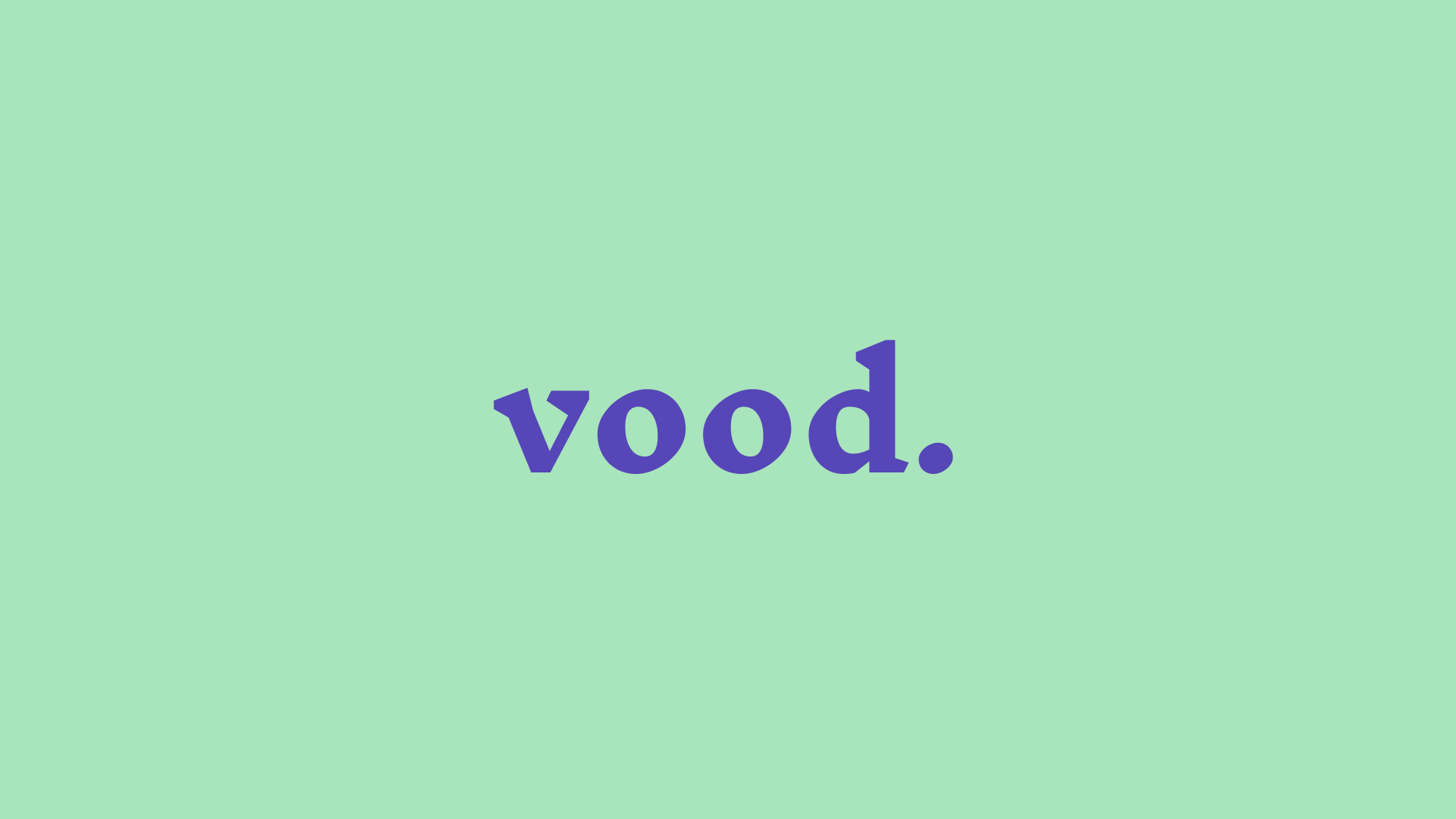
Vood.
Paula Appel
In recent years, vegan diets have become increasingly popular for ethical, health and environmental reasons. The decision to adopt a vegan lifestyle is often based on animal welfare, health benefits such as reduced risk of heart disease and diabetes, and a positive impact on the environment through reduced resource consumption and greenhouse gas emissions.
Vood. is more than just a vegan product - it is a brand for sustainability, health and ethics. The aim is to make the vegan lifestyle more accessible and attractive. We want to encourage people to eat less meat and more plant-based food without coercion.
Vood. is more than just a vegan product - it is a brand for sustainability, health and ethics. The aim is to make the vegan lifestyle more accessible and attractive. We want to encourage people to eat less meat and more plant-based food without coercion.
Vood. offers sustainable and nutritious alternatives to conventional foods that have the same taste and nutrients as meat products. The mission is to combine enjoyment with a sense of responsibility. Vood. shows that vegan food can be healthy, ethical and delicious. To build a community that values conscious eating and works towards a better future. Vood. stands for quality, sustainability and joie de vivre - a little bit of a better world in every bite.


